Eventful, Innovative, Sometimes Unloved, Sometimes Iconic… The History Of The IWC Da Vinci
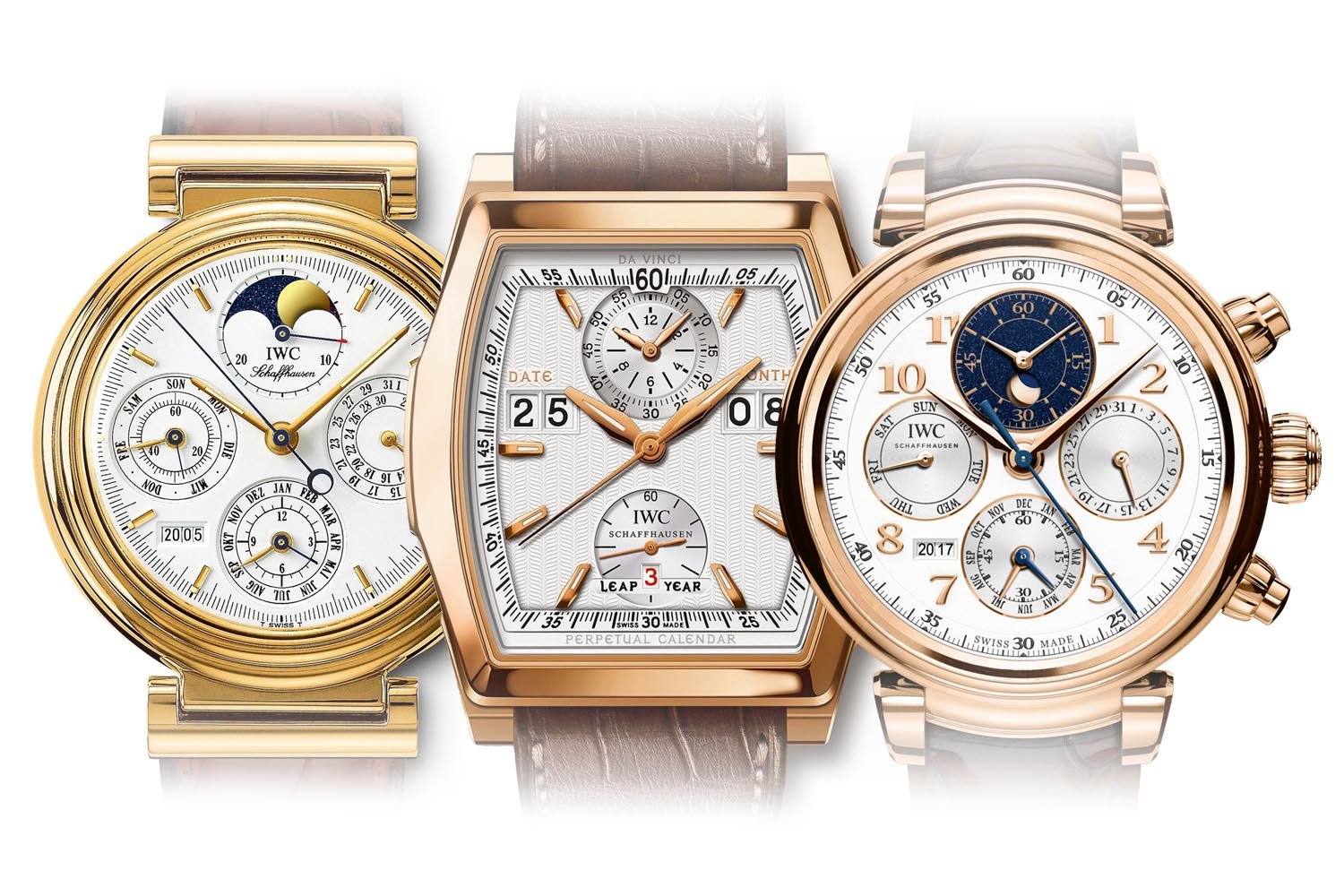
Over several decades of existence, the IWC Da Vinci has drastically evolved and has seen dozens of versions and style. Yet, even if this watch is certainly not as popular as the Portugeiser or the Big Pilot’s Watch, it has been a playing field for multiple innovations and milestones for the brand. Before we go hands-on with the latest version of the Da Vinci, in what we think is the key model of the 2017 collection, the Perpetual Calendar Chronograph, as a tribute to the famous 1985 watch created by legend Kurt Klaus, a short history of the IWC Da Vinci could be more than useful, a story that has been eventful, innovative, sometimes unloved, sometimes iconic.
The early Days of the IWC Da Vinci
Everything started in 1969, with the very first IWC Da Vinci, equipped with the infamous Beta 21 quartz movement. Indeed, IWC was involved in the development of the Beta 21, a wristwatch calibre with quartz control (frequency 8192 hertz). This first edition, the Da Vinci Quartz Electronic (ref. 3501) had an hexagonal-shaped case, which now seems rather unfamiliar to what is the collection today. Yet, this shape has been the inspiration for later watches, including the recent versions with tonneau-shaped cases.
This watch is a pioneer, as being a brand new collection for IWC, with extremely modern and bold style, also slightly figuring what would later be the 1970s at IWC (steel cases, integrated bracelet, minimalistic shapes and graphic lines, for instance with the Ingenieur watches), but mainly for the Beta 21 movement, the first Swiss Quartz calibre ever developed. The number 21 is reference to the number of brands and manufactures involved in the development (including IWC). This movement was the reaction of the Swiss watchmaking industry, to face the crisis that will happen later. Yet, this Da Vinci Quartz Electronic is an important part of the brand’s history.
An early, 1969, Da Vinci Quartz Electronic (ref. 3501) with Beta 21 movement
Later came some more “production-oriented” pieces (the 1969 ones were still rather prototype-style watches), in the name of the SL versions (ref. 3074 for example), yet using evolutions of the Beta 21 movement. The case became larger and bolder, in a typical 1970s style – and with a bit of Ingenieur SL elements too (better integration of the bracelet, more rounded angles…). Yet, the case was still relying on the hexagonal shape. Various iterations have been created, with masculine or feminine versions, in steel, in precious metals…
An example of 1970s SL Da Vinci, still with quartz movement
The icon, the 1985 Da Vinci Perpetual Calendar Chronograph
The first large evolution of the collection happened in 1985, with what is certainly the most famous version of them all, the Da Vinci Perpetual Calendar (Ref. 3750), created under the technical guidance of Kurt Klaus and while Günter Blümlein was the CEO of IWC. The launch of this watch is rather important, yet the context has to be explained. During the early 1980s, the Swiss watch industry had to face some massive changes. Interest in quality mechanical timepieces (including simple 3-hand watches and complex pieces) had been limited to a few collectors and connoisseurs. Wearers of mechanical watches were rare and seen as “old-school” or “outdated” people. While sales people of historical brands such as IWC were trying to explain the beauty of mechanics and the devotion of watchmaker to create fine timepieces, clients were all over the slim and precise electronic / quartz watches. Still, the mechanical movement was not dead at IWC.
The mythical Da Vinci Perpetual Calendar (Ref. 3750)
But on Thursday, 11 April 1985, at the Basel Watch Fair, something unusual appeared: a watch combining a strong design and a complex perpetual calendar chronograph movement (the ancestor of the watch we’ll review today), the Da Vinci Perpetual Calendar (Ref. 3750). This watch, the first of the new Da Vinci collection, is the result of designer Hano Burtscher’s work, who created a round design with articulated lugs. Even more important is what this watch represents: the comeback on the front of scene of complex mechanical movements. At the end of the 1970s, a certain Kurt Klaus created a perpetual calendar module where all the settings could be done via the crown and that could be affixed easily on basically every movement, from a simple three-hander to a chronograph. And in the case of the IWC Da Vinci Perpetual Calendar Chronograph Ref. 3750, this in-house perpetual calendar module was attached to a heavily modified Valjoux 7750 – creating the calibre IWC 79261. Its launch was not only a success for the Schaffhausen-based manufacturer but also symbolized the revival of the fine watches after years of dominance by electronic watches.
A ceramic example of the Da Vinci Perpetual Calendar (Ref. 3755)
Another first can be credited to this watch, as being the first wristwatch with ceramic case. Indeed, in 1986, IWC introduced the Da Vinci Perpetual Calendar (Ref. 3755), the world’s first wristwatch made of scratch-resistant black zirconium oxide ceramic (and later a white version also existed).
The rare 1995 IWC Da Vinci Perpetual Calendar Chronograph Rattrapante 3751
To commemorate the 10th birthday of the automatic Da Vinci Chronograph, the Da Vinci appears in 1995 as a split-seconds chronograph with no less than 10 hands running on the dial (the same year the brand introduced the superb Portuguese Rattrapante Chronograph). These 3 watches are the foundation of the collection IWC introduced at the SIHH 2017, both in terms of style and in terms of mechanical inspiration. This model, with its iconic shaped, remained in the catalogue for more than 20 years, evolving over the years by adding new dials or new complications.
Here is an example of the Ref. 3754, the evolution of the previous rattrapante version, this time with a more modern dial. We can clearly see here some designs clues that will be used in the 2017 collection, especially for the layout of the dial and the style of the numerals. This mid-2000s version is one of the latests before the collection will be entirely revamped.
Modern days of the IWC Da Vinci
Apart from the classical collection, IWC also introduced a “vintage” version, a sort of tribute to the early hexagonal-shaped Da Vinci watches. This was the ref IW546101, yet this modern edition featured an automatic movement. It was launched alongside other “vintage” inspired watches by IWC, such as the Aquatimer or the Ingenieur (the round case one, recalling the first edition).
The 2009 Da Vinci Perpetual Calendar Digital Date-Month (Ref. 3761)
Finally, in 2007, IWC presents the tonneau-shaped Da Vinci line. This includes the Da Vinci Chronograph with a completely new IWC-manufactured movement (the brand’s first in-house chronograph movement) and the Da Vinci Perpetual Calendar Edition Kurt Klaus, named after the man who invented the calendar. This watch again featured innovations, such as the stopped minutes and hours to be read off a subdial on a display like that of a normal watch (the sub-dial at 12, now used on most IWC chronographs) or the digital display of the perpetual calendar, with two large double-windows, for the date and the months. This watch remained in the catalogue until the SIHH 2017, when IWC introduced the brand new collection. It has existed in a chronograph version, in a perpetual chronograph (Jubilee version, with classical display), in a perpetual chronograph digital version and in 3-hand with big date.
The SIHH 2017 Da Vinci collection
The story continues for the IWC Da Vinci collection, with a brand new design and some new orientations. While mainly a men’s collection until now (even if some ladies’ Da Vinci have existed in most eras), the new collection is advertised also as a feminine by the brand. Yet, some strong men’s offer have been presented at the SIHH 2017.
In its tradition, IWC unveiled this year an entirely new collection, this time based on the rather unloved Da Vinci. Indeed, for a few years now, the tonneau-shaped versions were not so popular anymore and revamping the collection was certainly urgent. This was done early 2017, with a new design based on the icon of the collection, the 1985 Ref. 3750. It is a “back to basics” watch, as the first version introduced (the Perpetual Calendar Chronograph) was a strong tribute to the Ref. 3750, both visually and technically. A perpetual calendar chronograph it is. A round watch with articulated lugs it is too. And we also find back a bit of that baroque flair, slightly Italian-inspired theme that made the older Da Vinci so special.
During the SIHH 2017, IWC also showed several new watches, in order to create a consistent and large collection, ranging from a classical 40mm automatic (seen as a large female watch or a small masculine watch), a chronograph with 12 o’clock counter for the minutes and hours and finally, as the flagship, a tourbillon chronograph retrograde. Overall, all the specter of offers that IWC can give usually is already introduced. The new design is at the same reassuring for long-time collectors and strong enough to please modern watch lovers. A watch that we will look in details tomorrow, in the version we think is the best balance between a certain accessibility and the passion for mechanics, the Perpetual Calendar Chronograph is steel. To be continued…


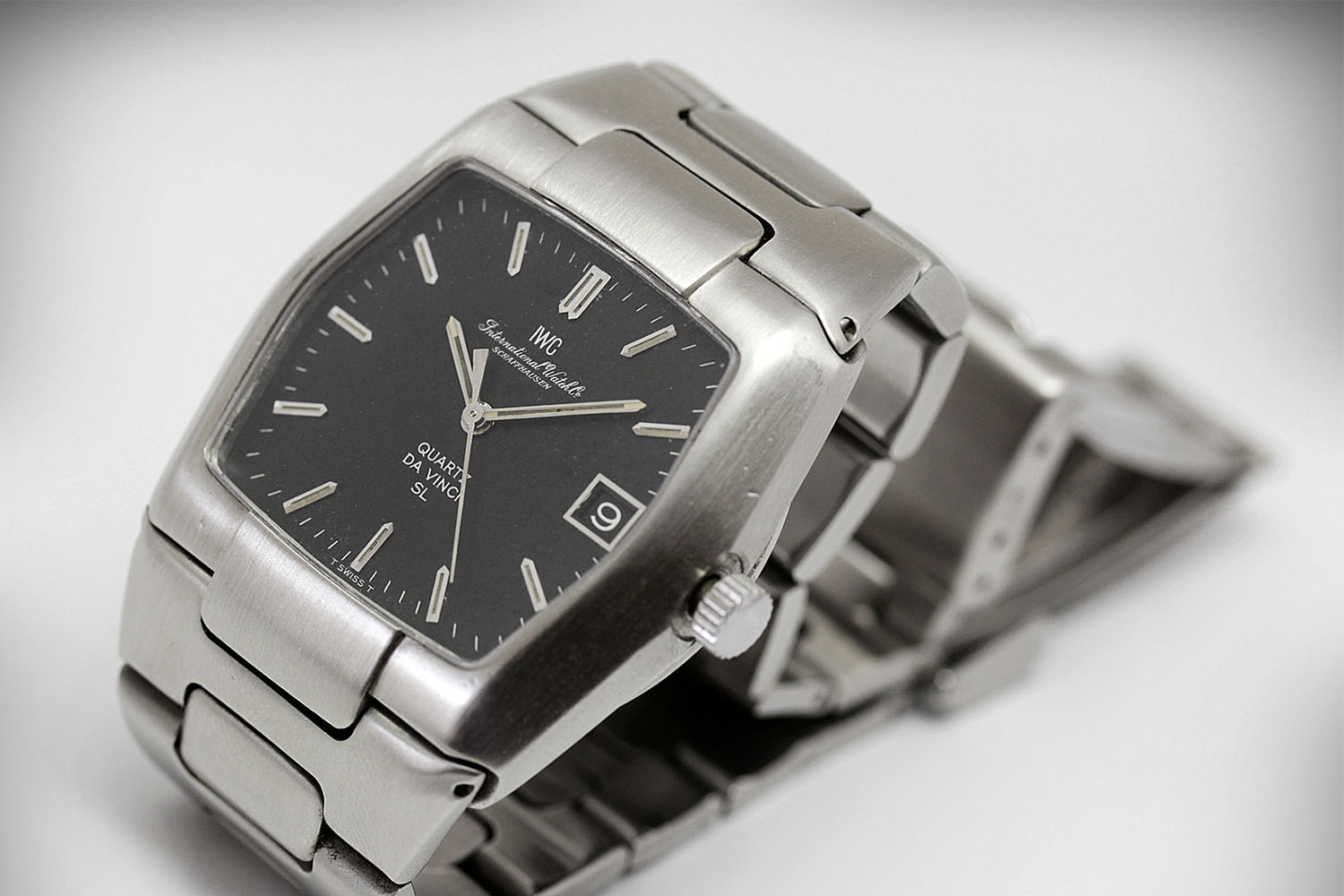
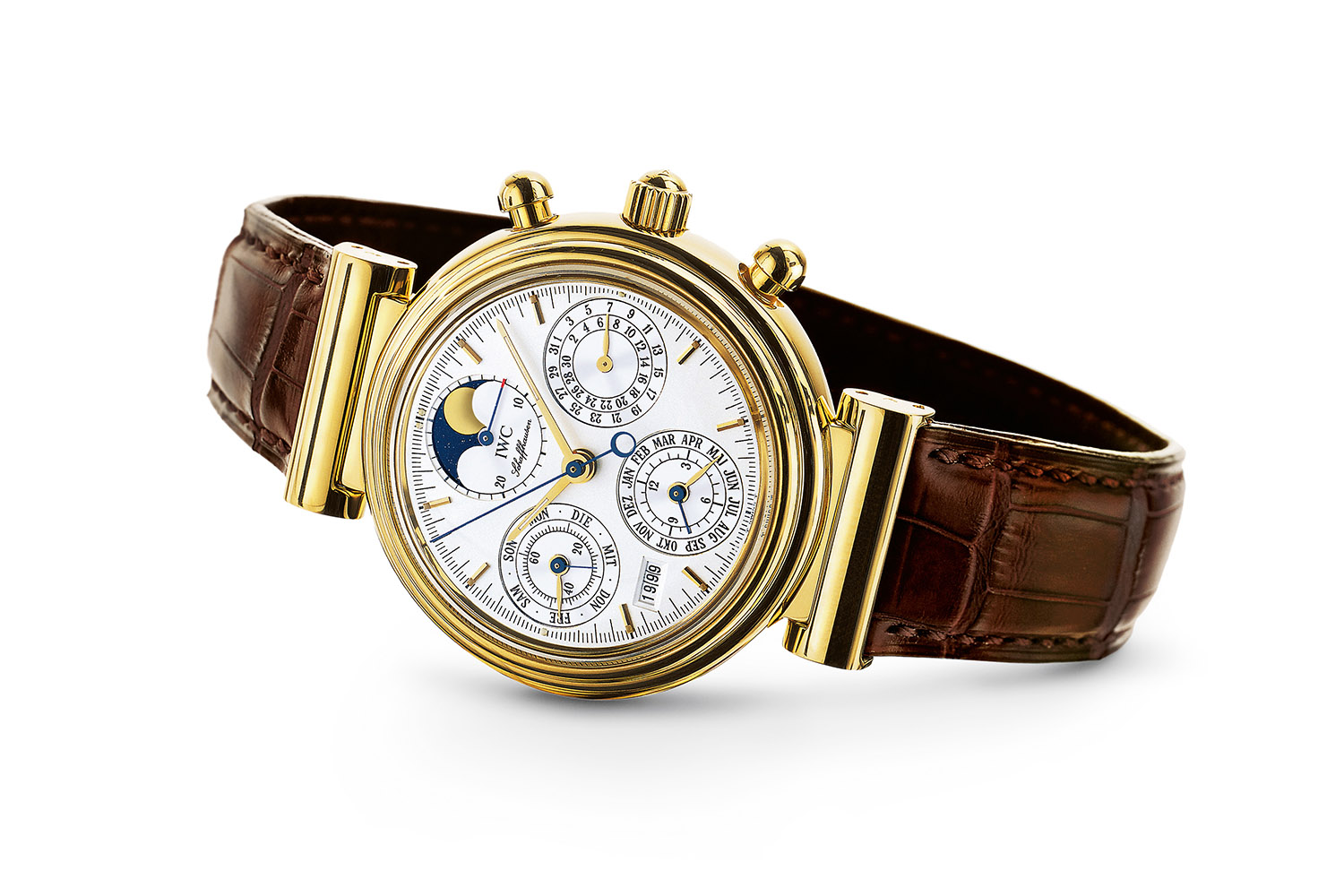
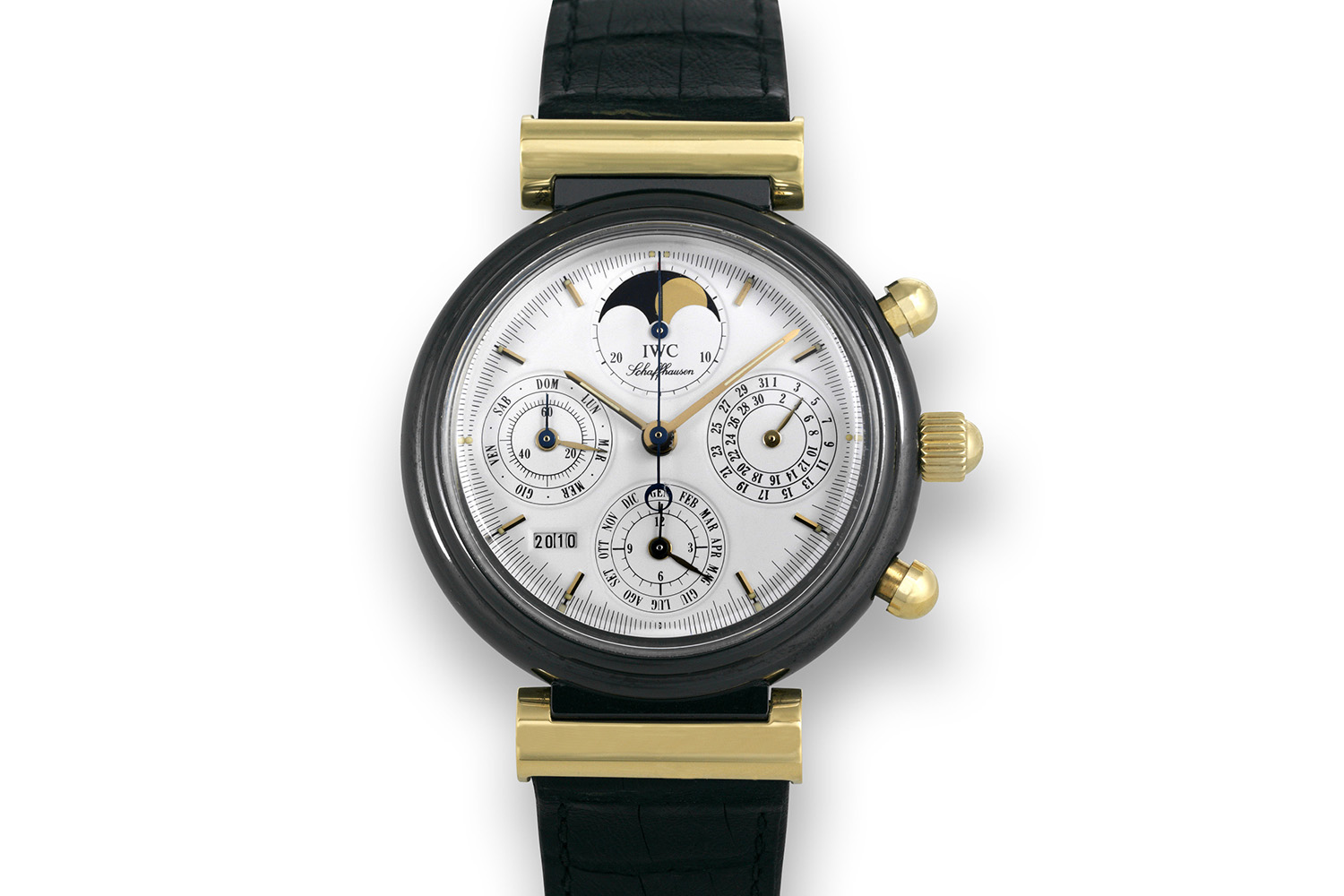
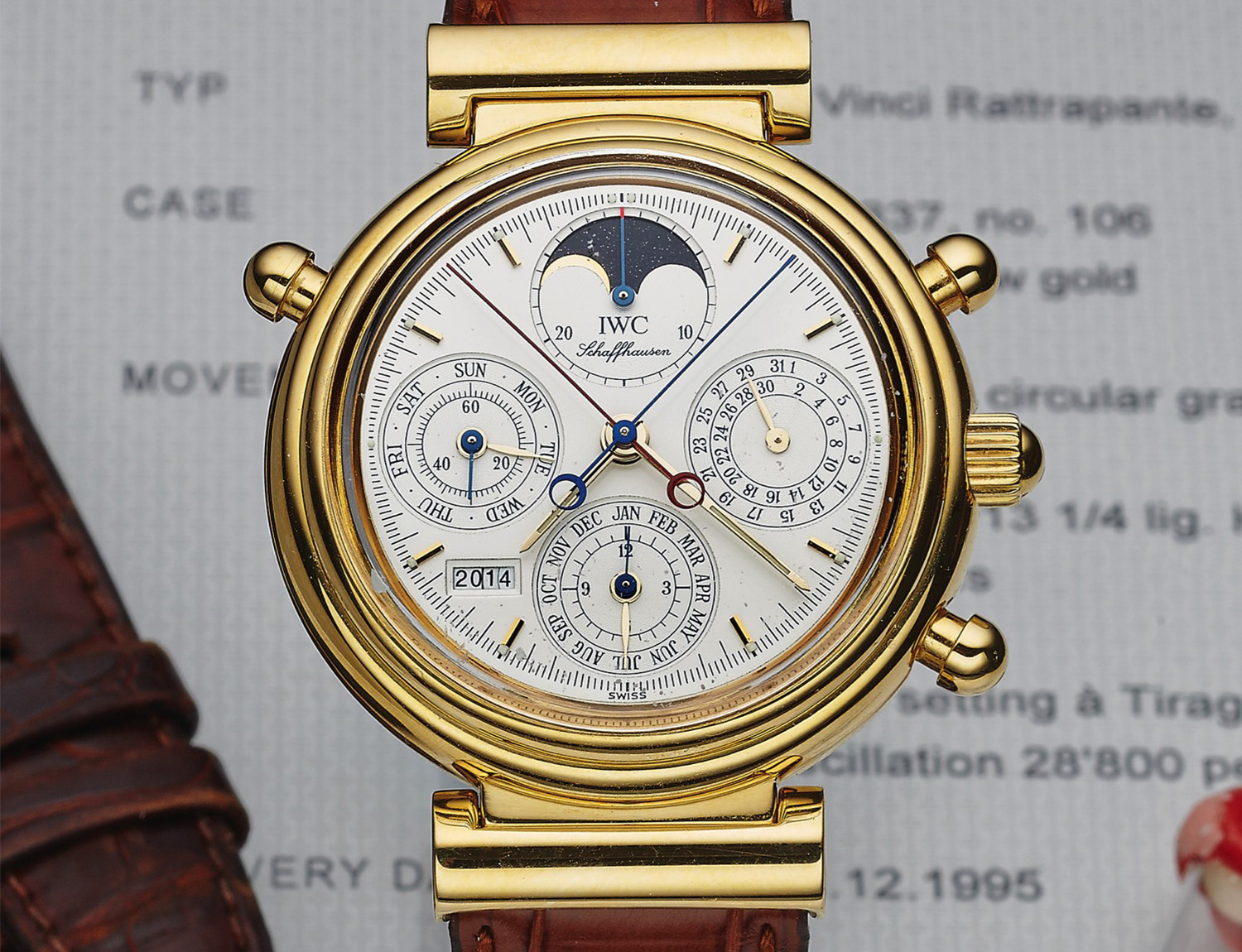
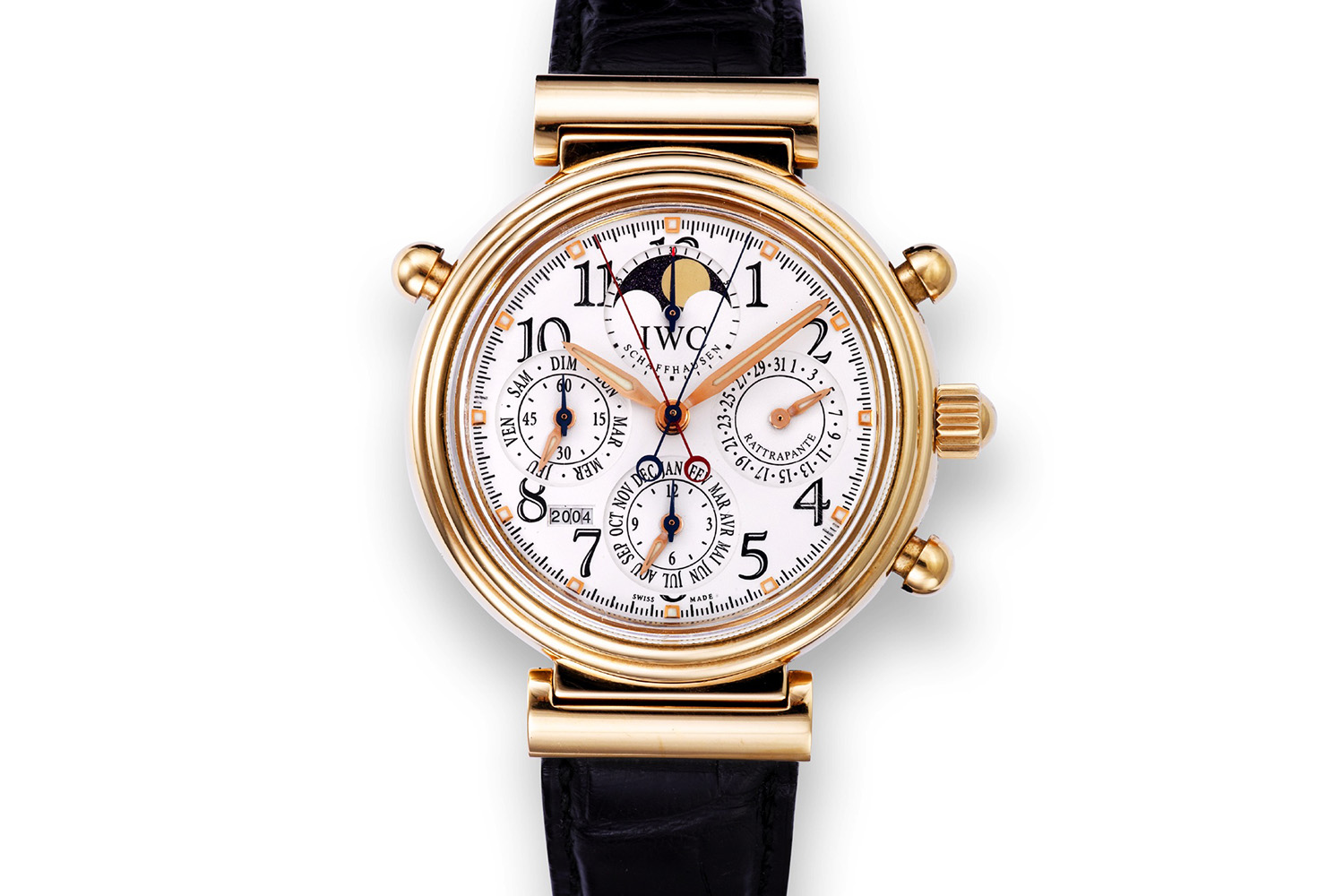
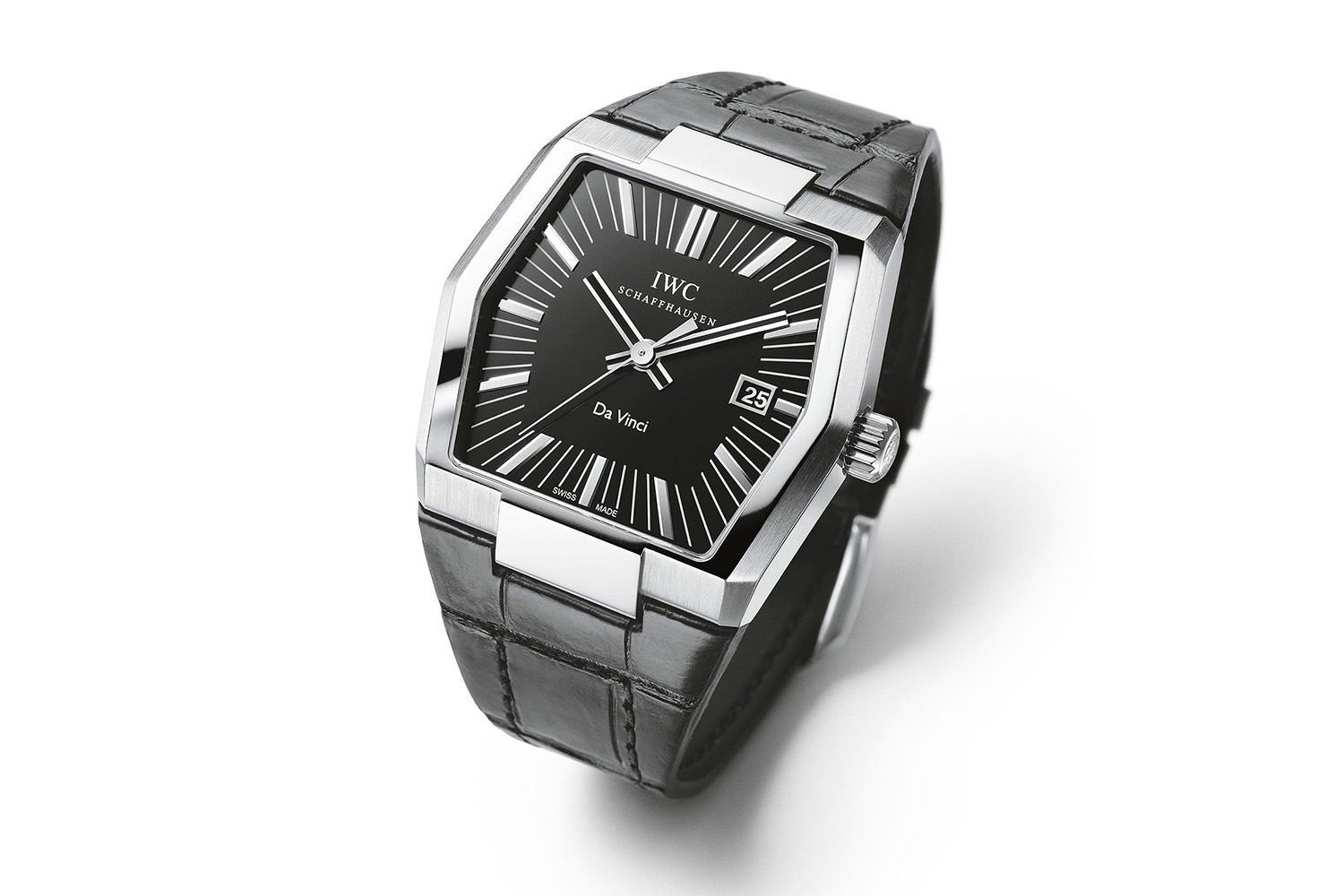
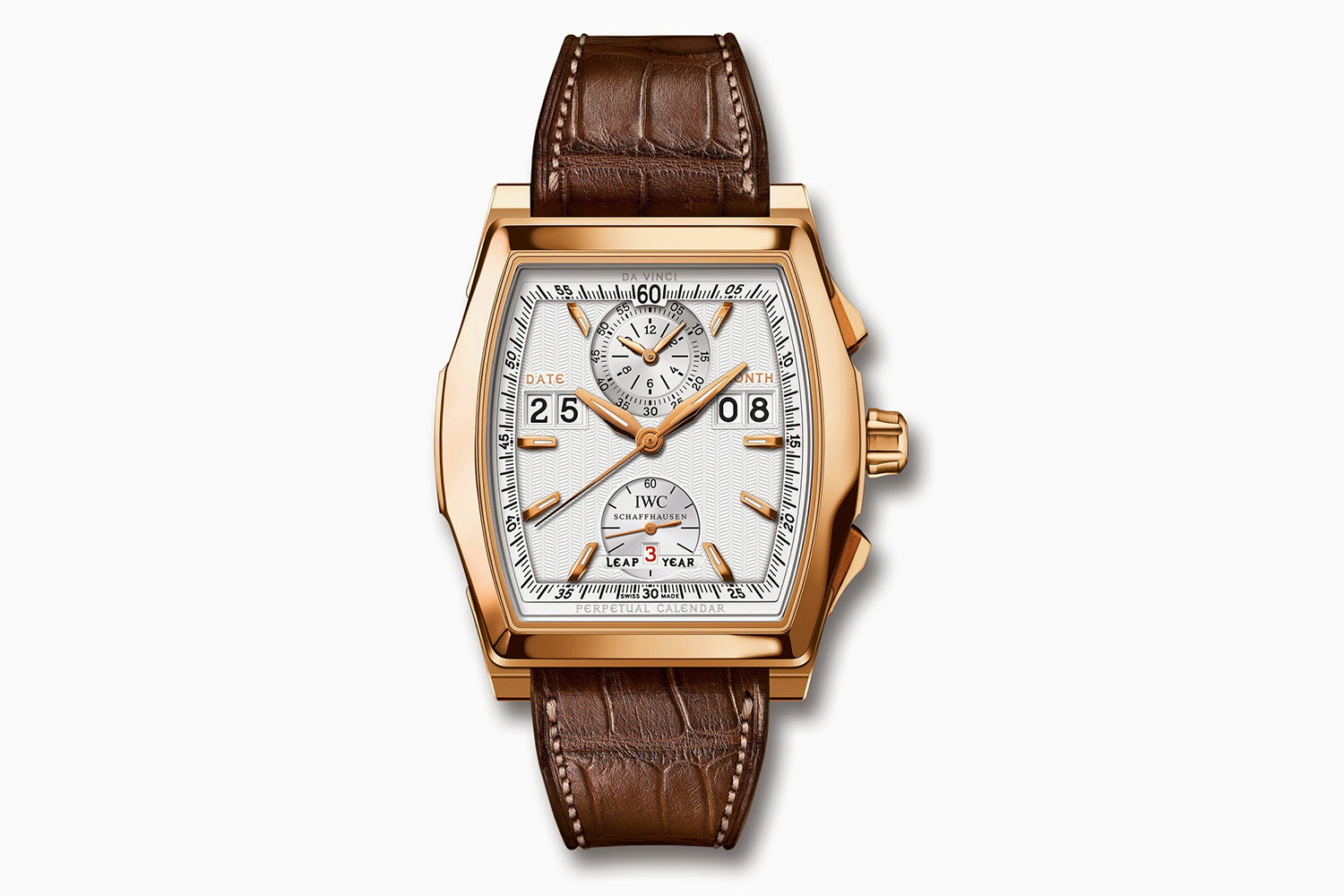
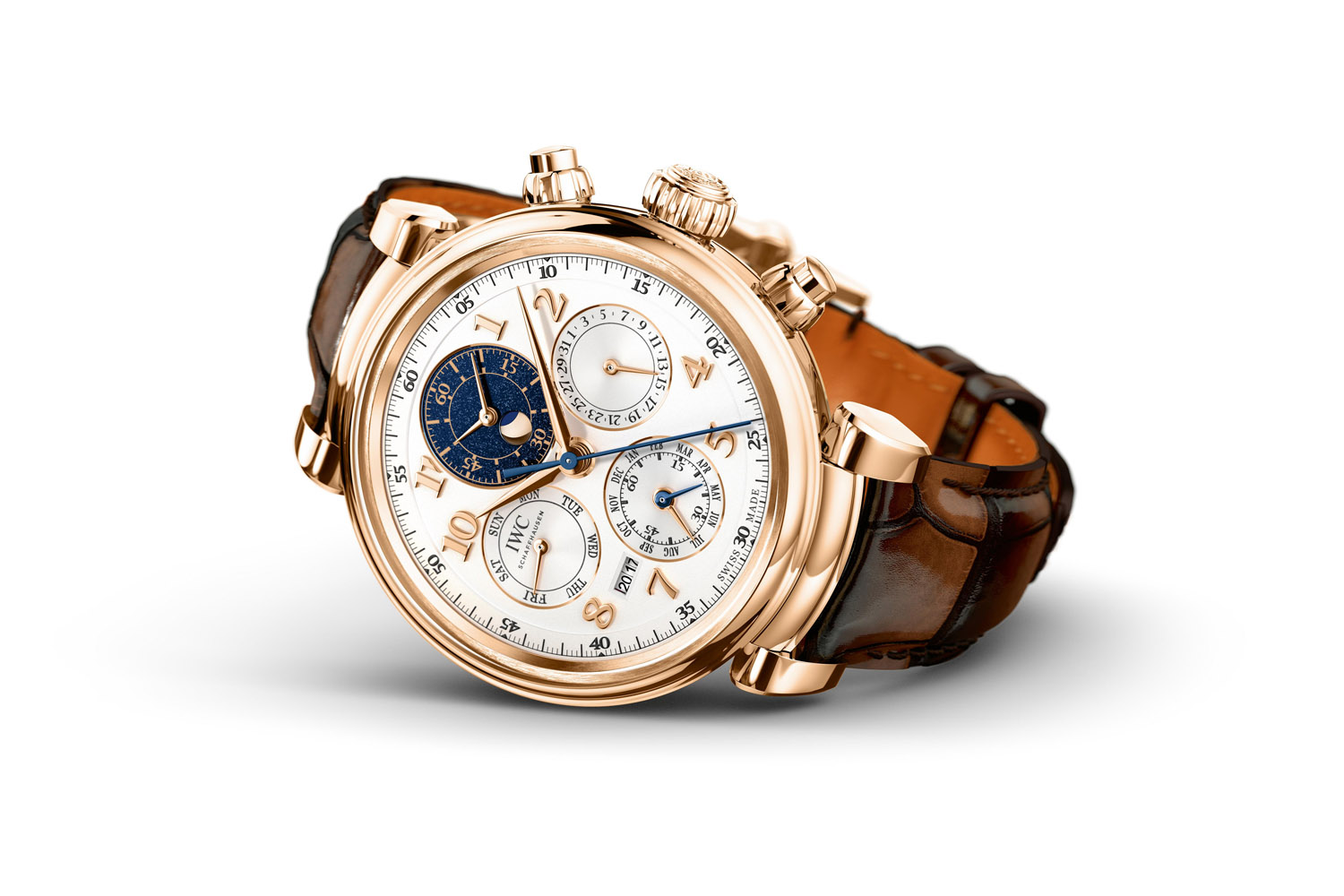
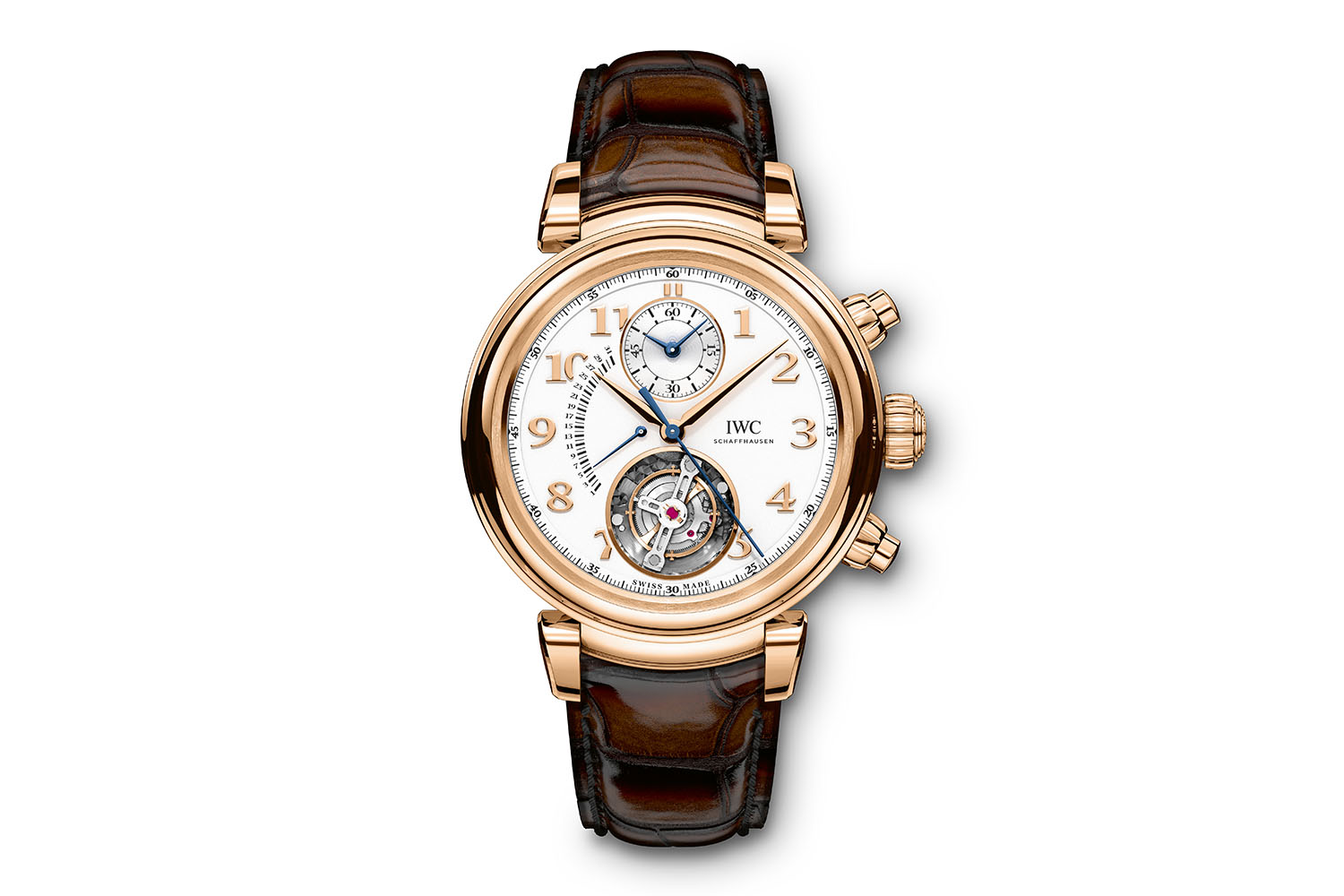

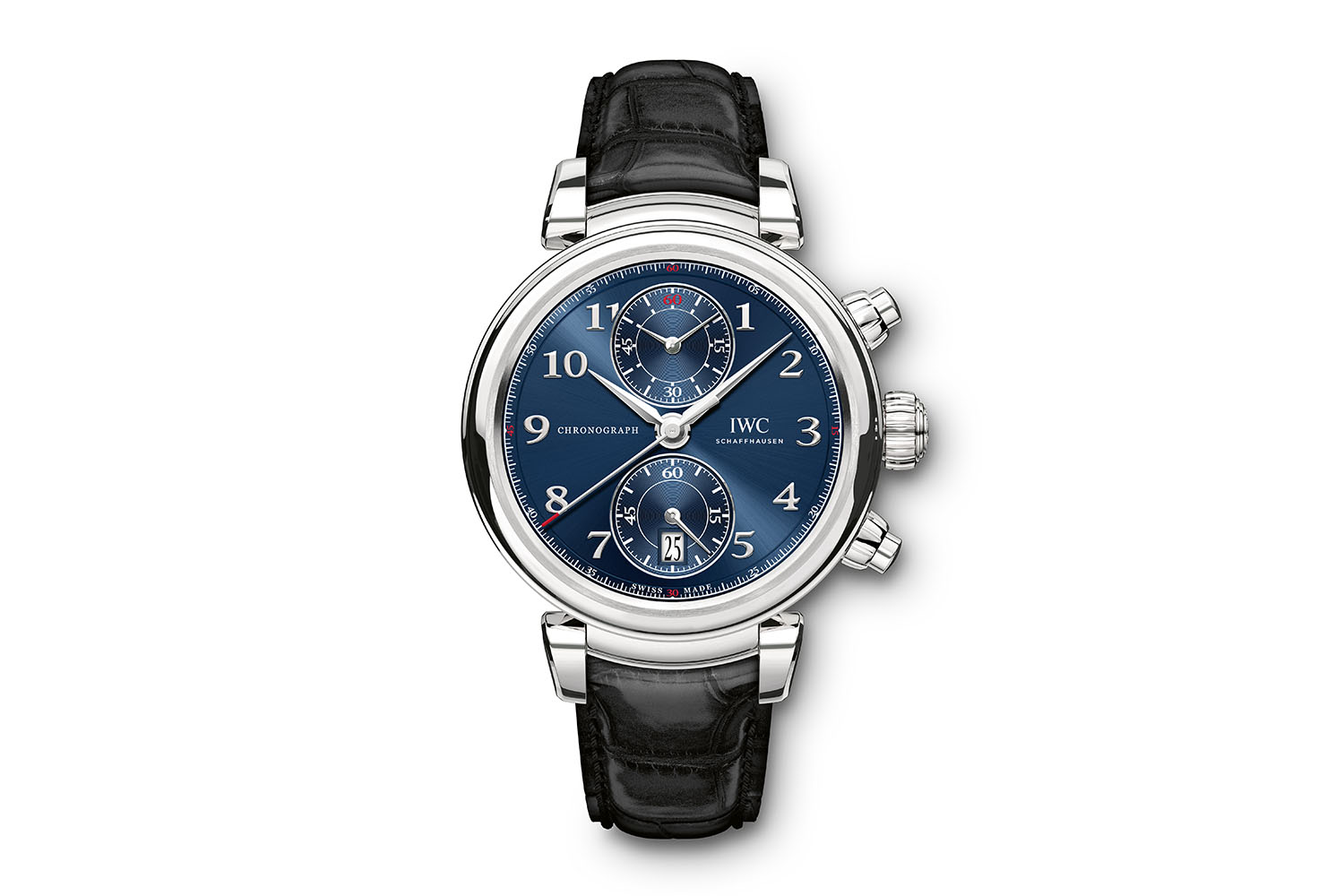



3 responses
Very interesting article about an unfairly overlooked watch family. The only comment I would make is that the Da Vinci Quartz and the much more recent Da Vinci Vintage watches clearly have hexagonal cases not octagonal cases.
Great article is there going to be a part 2? I keep looking for it.
Yes, I want to know the rest of this insightful article too.